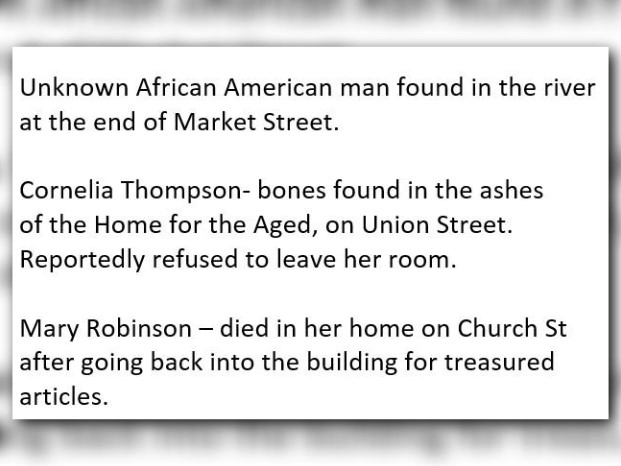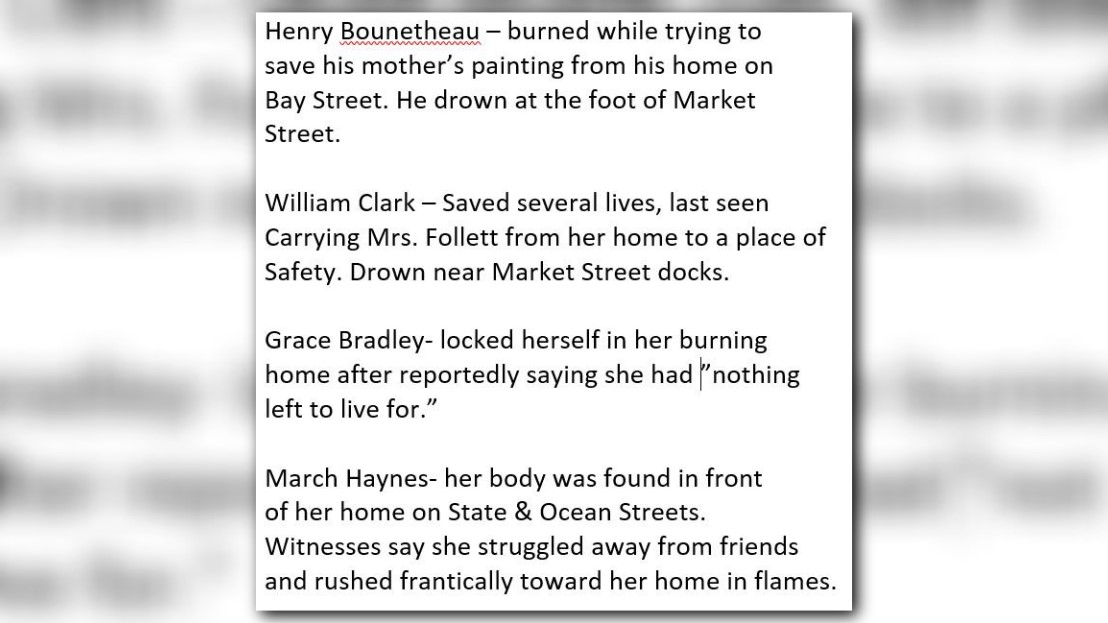JACKSONVILLE, FL- You could make a good argument that May 3 is the most important day in Jacksonville’s long history. It marks the day in 1901, Jacksonville burned to the ground in one of the worst city fires in our nation’s history.
It was 116 years ago, it began with weather much like we are having now. Hot and dry conditions, then a strong wind blew in from the east and in 8 hours…. much of the city was gone.
No memorials or signs sit at the corner of Beaver and Davis Street, but in 1901 here sat the Cleaveland Fibre Factory. Spanish moss used for mattresses was sitting outside and the workers took a break around noon for lunch. Embers from a neighbor’s stove landed in that moss, a sudden and strong east wind began to blow and Great Fire began.
“Not long after there was an explosion and Spanish moss, bird feathers, horse hair and cotton all went up in a great torrent of fire and then began to blow through the town,” describes Emily Lisska with the Jacksonville Historical Society.
The wind carried the embers and flames rapidly, consuming a path of wooden homes and buildings. People began emptying into the streets and running east towards Hogan’s Creek.
“Running for their life, some carrying the few possessions they have across this bridge [Duval St Bridge] and not long after the picture the bridge is lost to the city,” tells Lisska.
The nearly 40 Jacksonville firefighters in their horse drawn carts hit another problem just trying to get to the fire. Only some streets were paved, others were dirt or sand. The carts, heavy with water and equipment, began to get bogged down on the dirt roads.
The fire stopped at Hogan’s Creek, the water a natural barrier, but it was far from over.
“Then at that point the fire turned and roared toward the St. Johns riverfront and began lapping up the rest of the town going back,” says Lisska.
A large group of people waiting on the docks to be transported across the river were suddenly trapped by fire to the north and east and had no choice but to jump into the St Johns River and swim.
“The docks were actually burning as people ran off the docks and there were boats and ships trolling the St. Johns river to pick up people running for their lives,” says Lisska.
There are reports that the heat from the fire created a water spout on the river, nearly capsizing some of the boats trying to rescue swimmers. Incredibly, only 7 lives were lost, three to drowning and four to the fire. The damage to downtown was extensive, 146 Jacksonville city blocks reduced to rubble and ash with an estimated cost of 15 million dollars. In the days after, martial law was instituted and tent cities popped up, the largest in Hemming Park. But people were quick to start the process of putting Jacksonville back together.


“This fire was on a Friday and on Monday morning a permit was pulled to start construction,” tells Lisska with a smile.
By 1905 Forsyth Street was taking shape again, Jacksonville was coming back, building bigger and better buildings. Lisska says the toughness of the firefighters and people that rebuilt our city is just as important to legacy of the fire.
“I believe this legacy will forever be with our firefighters,” tells Lisska,” So the importance of safety for our city and administration after administration, you notice just that importance. You see it play over when there is a hurricane threat, you see it anytime the city is threatened.”
A resiliency in a city that literally rose back up from the ashes.
Though the fire was under control by 8:00 p.m. that night, some historians argue it wasn’t technically out until one year later. That is because an old feed company at the corner of Bay and Market Streets with a pit full of grain would occasionally smolder or break into a flame after the Great Fire.
One year after the fire, the Fire Chief ordered a pumper and hose down into that pit and told the men to pump the pit full of water to make sure the flame was extinguished for good. With that the last flame of the Great Fire was officially out.
(Writer’s note- for a more detailed look at the exact events of the fire, the individual survivor stories and stories of rebuilding look into the book “The Great Fire of 1901” by Wayne W. Wood and Bill Foley, published by the Jacksonville Historical Society.)

